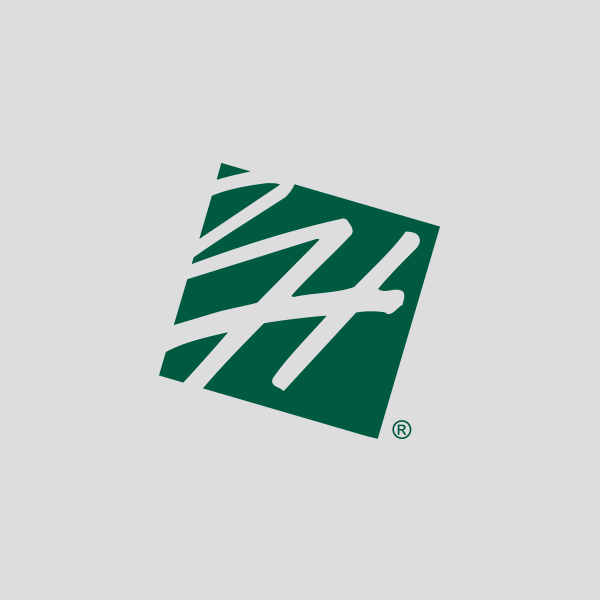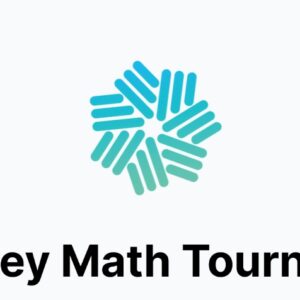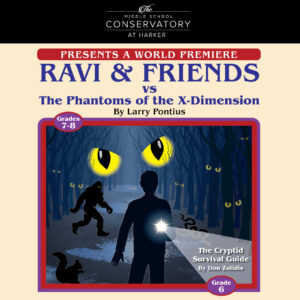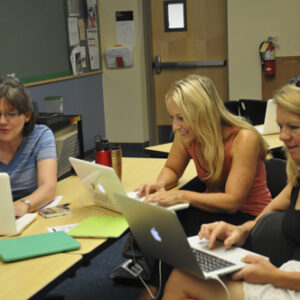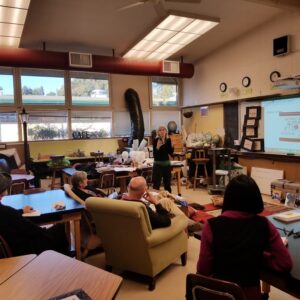This summer, several Harker teachers headed back to campus to participate in Harker’s Tech Grant program, which helps teachers learn new skills that will help them be more effective and well-rounded in the classroom.
Each project has the teachers learn or utilize a piece of technology that will bring a new dimension to their teaching methods. Gr. 1 language arts teacher Cindy Proctor, for example, developed a method for course management using software called OpenClassroom. “I used OpenClassroom to create interactive forums and online assignments for Language Arts and Social Studies,” Proctor said. “While in the past there was not a system that was simple or safe enough to implement, OpenClassroom will give my young students new access to a wide range of activities and information in a safe, legal manner.”
OpenClassroom allows Proctor to provide links to materials such as PowerPoint presentations, online videos and educational games. “OpenClassroom allows me to make several resources available to my students that they can access independently,” she said. “I’ll also be able to assess my students’ understanding of the material through the use of online forums, quizzes and assignments.”
Gr. 5 math teacher Pat Walsh created an area on Athena, Harker’s online learning management system, that contains a series of Web links that teachers may find especially useful. “All of the other teachers will also be able to post new links that they have found to be successful,” Walsh said. “Having them all posted on one site will make it easy for teachers to find and use the appropriate resource. “
In addition, Walsh created another page where students can post relevant educational links and have their classmates evaluate them.
MS science teacher Scott Kley-Contini became more familiar with the eBeam tool, which allows teachers to create interactive whiteboard presentations using a stylus and a projector. “The eBeam is a wonderful tool for giving PowerPoint presentations, which was my original use of the tool, however it is capable of so much more,” he said. “I wanted to create lessons where students could come to the board and interact with material.”
Kley-Contini practiced with the eBeam tool by making lessons that he will put to use in the 2009-10 school year. He also created a series of eBeam tutorial videos with help from MS Spanish teacher Julie Pinzás and Angela Neff, assistant director of instructional technology. With these, he plans to conduct eBeam training sessions for the MS science department.
MS English teacher Stacie Newman learned how to use an LCD projector for classroom demonstrations on how to edit papers and search the Internet. She also sought to increase her skills in using Athena, so that more of her course materials such as handouts, instructions and marked up drafts can be accessed by students online.
Bernie Morrissey, MS librarian, also put his time into learning more about Athena, setting out to learn more of Athena’s advanced features, “such as quizzes, questionnaires and sound recording,” he said. “Teachers often come to the other librarians and me when they have a question about Athena. Instead of having to direct them to their campus instructional technologist, I can show them the basics of some of these underutilized parts of Athena.”
In addition, Morrissey also created demonstrations of the Noodlebib note-taking software using a free program called Jing, which allows users to record the onscreen action as they use their computers. Teachers will be able to refer back to these “screencasts,” as they are called, after the initial demonstration.
Meanwhile, on the Saratoga campus, US science department chair Anita Chetty and journalism advisor Chris Daren collaborated to combine their resources into a new workbook for Chetty’s anatomy and physiology class. The class was designed to be similar to a college-level course, and the students keep the completed workbook at the end of the class to use when applying to medical schools.
Over the summer, Chetty familiarized herself with Adobe InDesign and photography concepts, and created templates for the new workbook. She also worked with Daren to engage student photographers and designers, whose work will be used to create the new workbook. For example, contributions from photographers will be used to create an image bank that will contain photos featuring student athletes and performing artists. Chetty’s students will then label the muscles being used in the stills.
These and several other Tech Grant projects will help bolster the teachers’ skill sets for the coming school year. Running for nearly 10 years, the Tech Grant program has proven to be both effective and well-liked by teachers. “It is certainly well-documented how this is a great school for students, but the Tech Grant program also reflects upon the vision Harker has to make this an amazing environment in which to work as well,” said US math teacher Troy Thiele, whose Tech Grant project involved making videos of his lectures that students could refer to in the future. “I could not thank Harker enough for continuing to offer this program. It is very much appreciated!”
